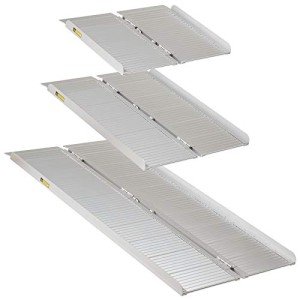Guide To Ramps For Mobility Scooters: The Intermediate Guide To Ramps …
페이지 정보

본문
Ramps for Mobility Scooters: A Comprehensive Guide
Mobility scooters have ended up being vital tools for individuals with mobility obstacles, supplying a sense of independence and flexibility to navigate numerous terrains. Nevertheless, for these scooters to be totally practical in everyday life, using ramps is typically necessary. In this article, we will check out different types of ramps, their advantages, factors to consider when selecting the right ramp, and answer some regularly asked concerns.
Comprehending Ramps for Mobility Scooters
Ramps tend surfaces that allow mobility scooters to conquer obstacles such as curbs, steps, and limits, making it much easier and safer for users to access structures, vehicles, and outdoor areas. By providing a gentle slope, ramps lessen the risk of accidents and increase availability for individuals utilizing mobility scooters.

Kinds of Ramps
There are numerous types of ramps offered on the market, and each type serves various needs. Below is a table that lays out the numerous types of ramps for mobility scooters:
| Type of Ramp | Description | Suitable Use |
|---|---|---|
| Foldable Ramps | Lightweight and portable ramps that can be folded for easy storage. | Home use, travel, and occasions |
| Stationary Ramps | Permanent ramps made from heavy-duty materials. | Accessing buildings or homes |
| Wheelchair Ramps | Designed particularly for individuals using wheelchairs and scooters. | Public places, homes, and companies |
| Limit Ramps | Brief ramps specifically created to fit over door thresholds. | Interior or outside door access |
| Portable Ramps | Easily easily transportable ramps produced temporary usage. | Travel and outside events |
Advantages of Using Ramps
Safety: Ramps minimize the risk of mishaps by supplying a stable slope for mobility scooter users to navigate barriers.
Availability: With ramps in location, users can access structures, vehicles, and public spaces with higher ease.
Self-reliance: Ramps empower individuals with mobility difficulties, allowing them to move easily without depending on assistance.
Flexibility: Ramps are readily available in various sizes and designs, making them appropriate for indoor and outside use, in addition to for different terrains.
Affordable: By allowing much better access, ramps can relieve the need for comprehensive remodellings or modifications to homes or buildings.

Factors to Consider When Choosing a Ramp
When choosing a ramp for mobility scooters, it's crucial to evaluate numerous elements to guarantee it fulfills the user's requirements successfully. Here's a list of considerations:
1. Weight Capacity
- Ensure the ramp can support the weight of both the mobility scooter and its user. A lot of ramps indicate their optimum weight capability.
2. Length and Inclination
- Steeper ramps may be harder to navigate. It's important to pick a ramp with a suitable length to produce a mild slope. The Americans with Disabilities Act (ADA) recommends a ratio of 1:12 for wheelchairs, indicating that for each inch of increase, there should be at least 12 inches of ramp run.
3. Product
- Ramps are made from various products consisting of aluminum, wood, and plastic. Aluminum ramps are lightweight and durable, while wood ramps might mix much better aesthetically with a home however can be heavy.
4. Portability
- Consider how frequently the ramp will be moved. If portability is vital, look for foldable or lightweight alternatives.
5. Surface area Texture
- A non-slip surface area is essential for security, particularly in damp conditions. Search for ramps with textured surface areas or included grip features.
6. Application Area
- Determine if the ramp will be used inside your home or outdoors. Outdoor ramps might require to hold up against weather condition components, while indoor ramps must fit conveniently in doorways or corridors.
7. Regional Regulations
- Constantly inspect local building regulations or regulations regarding ramp installation, especially for long-term structures.
Frequently Asked Questions (FAQs)
1. How do I know what size ramp I require?
- The size of the ramp required will depend upon the height that needs to be overcome and the readily available area for the ramp. Determining the vertical increase and considering the ADA advised slope ratio will assist figure out the right length.
2. Can ramps be used for other mobility aids besides scooters?
- Yes, ramps can be utilized for numerous mobility aids, consisting of wheelchairs, walkers, and even strollers.
3. Are there any safety suggestions for utilizing ramps?
- Constantly check that the ramp is securely positioned and steady before usage. Motivate users to approach ramps gradually and maintain a constant speed when ascending or coming down.
4. How do I preserve my ramp?
- Frequently check the ramp for any indications of wear or damage. Tidy them periodically to eliminate dirt and prevent slipping, and protect any loose hardware.
5. Are there financial help programs for acquiring ramps?
- There are several programs that may help in acquiring ease of access devices, including ramps. These may include local grants, government assistance programs, or charitable organizations concentrated on disability support.
Ramps for mobility scooters play a considerable function in creating accessible environments for people with mobility challenges. By comprehending the different kinds of ramps available, their advantages, and the factors to think about when picking a ramp, people and caretakers can make educated decisions that improve independence and security. Whether for home use, public buildings, or travel, the ideal ramp will guarantee that mobility scooter users can steer their world with ease, dignity, and confidence.
- 이전글The Top Reasons People Succeed In The Replacing Bifold Closet Doors Industry 25.11.16
- 다음글5 Laws That Anyone Working In Oven Hood Should Be Aware Of 25.11.16
댓글목록
등록된 댓글이 없습니다.
